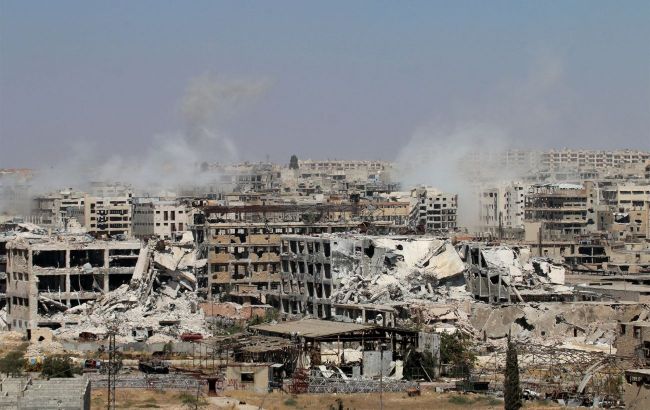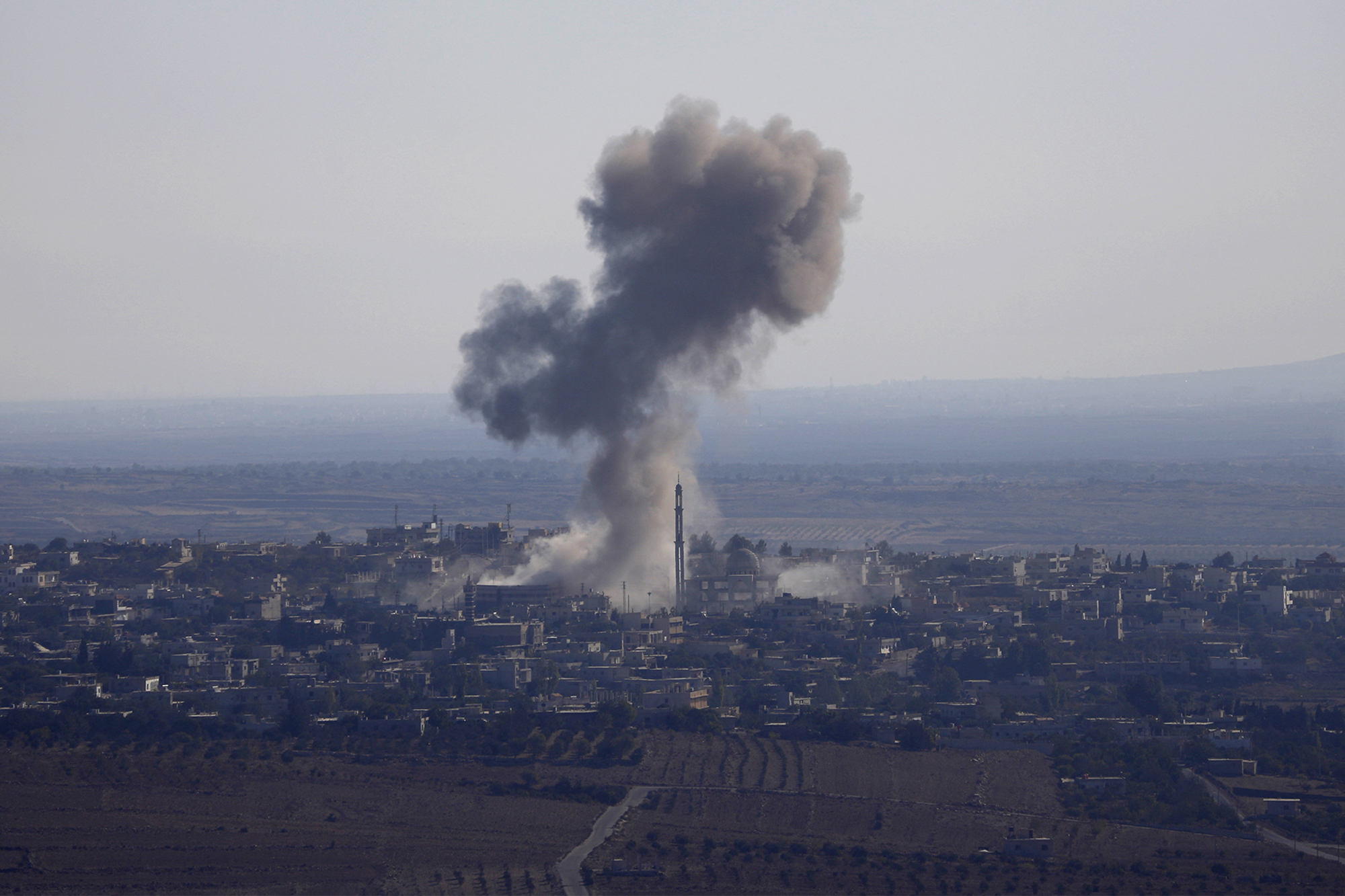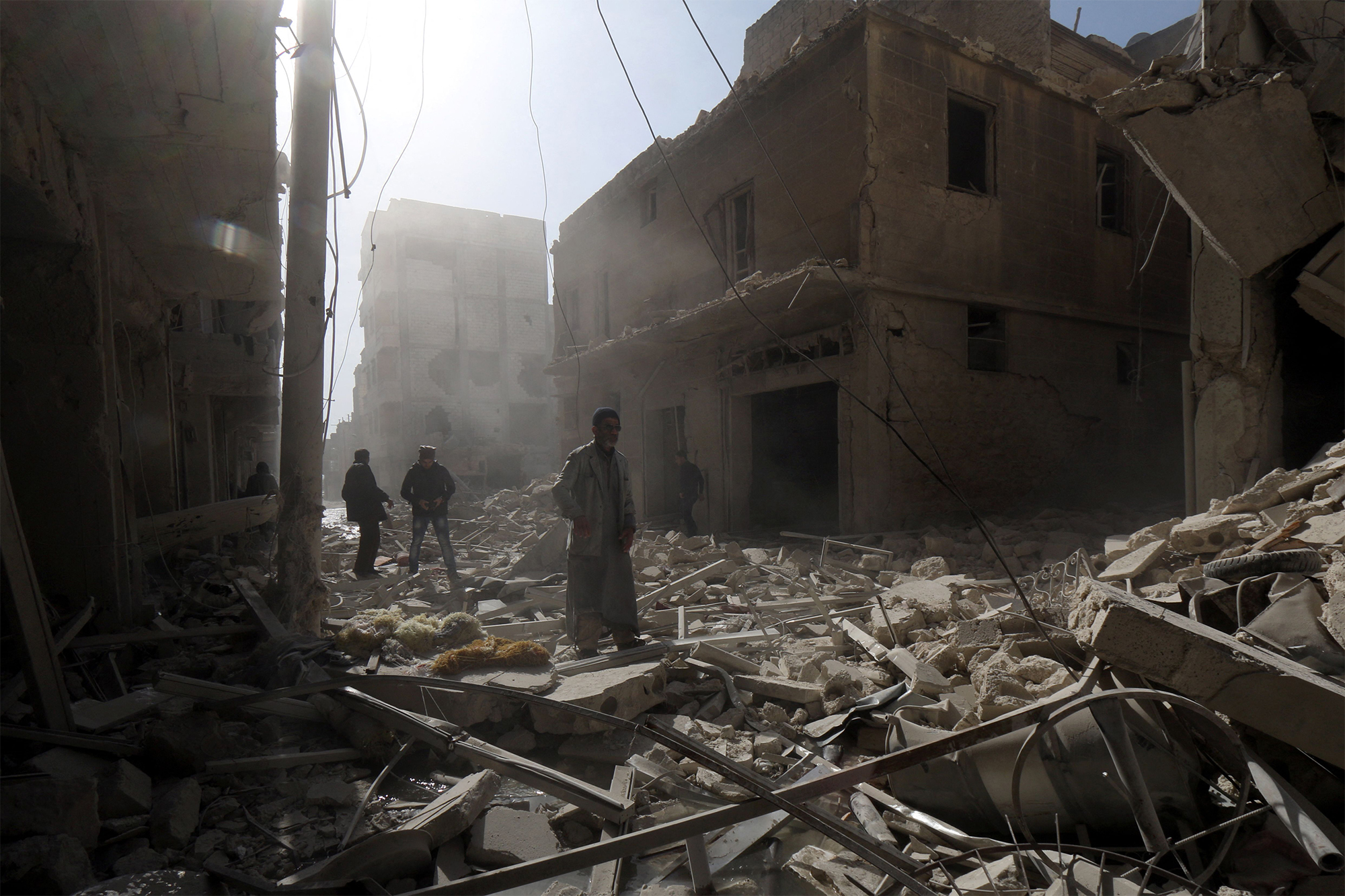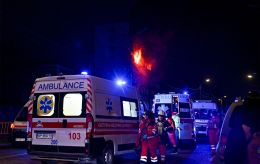Russia's tactics in Aleppo's tragedy: How Kharkiv can avoid fate of Syrian city
 Russia bombs Aleppo (photo: Getty Images)
Russia bombs Aleppo (photo: Getty Images)
Kharkiv Mayor Ihor Terekhov stated that due to constant shelling, the city could become "another Aleppo." Without Western assistance, the regional center could suffer even greater destruction.
More details about what Russia did with Aleppo and what is happening with the city now can be found in the material by RBC-Ukraine.
Terekhov didn't just compare Kharkiv to the Syrian city for no reason. In 2016, Russian air forces, as part of assistance to Bashar al-Assad's regime, bombed Aleppo, turning it into ruins.
End of the Arab Spring: How war began
Military clashes in Syria began in March 2011 from civil protests and the Arab Spring. Protesters demanded an end to Bashar al-Assad's regime and the 50-year rule of the Arab Socialist Ba'ath Party. By 2012, the conflict had escalated into a full-scale war.
Until 2015, Russia supported the Assad regime indirectly by providing weapons. Some analysts claim that the Kremlin wanted to maintain access to the port in the Syrian city of Tartus, where the 720th Material-Technical Support Point is located—the only Russian military base outside the former USSR. Others argue that it was about preserving Russia's overall influence in the region.

Photo of one of the destroyed Syrian cities (photo: Getty Images)
Initially, the Bashar al-Assad regime attempted to handle protesters on its own, including using chemical weapons. In response, the UN deployed a whole operation but never reached any conclusions. In 2015, observers began reporting that the Assad regime was using Russian equipment. Sites like Bellingcat and Reuters published photos of Russian equipment in Syria, such as downed aircraft.
For a while, the government army fought against rebels and Kurds. At the same time, Syria saw battles involving ISIS and Hezbollah militants. Western countries periodically intervened in the conflict, for example, France conducted airstrikes against ISIS forces. The UN limited itself to statements and occasional humanitarian aid. Protesters also received assistance from the US in combating ISIS.

Syrian city after bombing (photo: Getty Images)
Battle for Aleppo: How Russia bombed the city
In December 2015, Russian aircraft began bombing Aleppo. In September 2016, the government army launched an offensive on the city, where rebel groups were concentrated. Russia controlled the skies over the city. According to the Independent International Commission of Inquiry on Syria, Syrian air forces were quite limited, and Russian forces could bomb Aleppo both day and night.
Only on September 23, Russian aircraft flew to Aleppo 42 times and delivered at least 28 confirmed strikes, destroying the eastern part of the city. According to the UN, Russian forces used exclusively unguided aerial munitions, indicating that the Kremlin did not aim to target protesters specifically. Instead, it was more about terrorizing and employing the infamous Russian tactic of "scorched earth."
Within just 5 days, from September 23 to 27, during the bombardment, 300 people were killed.
 Russia, along with the Assad regime, deliberately targeted hospitals, medical centers, and clinics in northern Aleppo. On September 19, 2016, a UN and Syrian Red Crescent aid convoy left the government-controlled part of Syria with humanitarian cargo. The UN claims that all conflict parties were informed of the route. However, during unloading, the convoy was targeted from the air.
Russia, along with the Assad regime, deliberately targeted hospitals, medical centers, and clinics in northern Aleppo. On September 19, 2016, a UN and Syrian Red Crescent aid convoy left the government-controlled part of Syria with humanitarian cargo. The UN claims that all conflict parties were informed of the route. However, during unloading, the convoy was targeted from the air.
Analysts concluded that both Syrian and Russian air forces carried out the airstrikes. Naturally, the Russian Foreign Ministry immediately denied this information, with Sergey Lavrov stating that the strike on the convoy was conducted from artillery. However, remnants of "barrel" bombs used by Syrian forces and OFAB-250-270 bombs used by Russia were found at the attack site.
Russia continued to destroy Aleppo until the Assad regime encircled it. Over four years of military action in the city, and as a result of air attacks on Aleppo, 30,000 people, mostly civilians, were killed. In 2016 alone, the bombing killed 2,000 children. Overall, according to official statistics, 20,000 children died in the Syrian war years. Russia also turned the city's historical center, a UNESCO heritage site, into ruins.

The photo of five-year-old Omran Daqnish has become a symbol of the brutal bombing of Aleppo (photo: Getty Images)
When Assad besieged Aleppo, brutal purges began in the city. At the end of 2016, those who survived in Aleppo were offered to leave the city. After that, Bashar al-Assad announced victory and the start of public celebrations in the ruined Aleppo. At government rallies held amidst the ruins, portraits of Assad himself, Hezbollah leader Hassan Nasrallah, and Russian President Vladimir Putin appeared.
Notably, one of those who devised and executed the plan to destroy Aleppo from the air was the former Commander-in-Chief of the Russian Aerospace Forces, Sergey Surovikin. For the destruction of the Syrian city, Vladimir Putin awarded Surovikin the title of "Hero of Russia."

